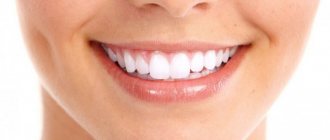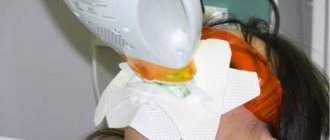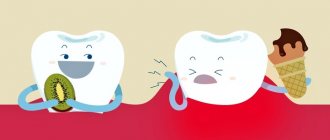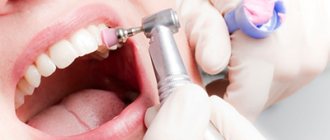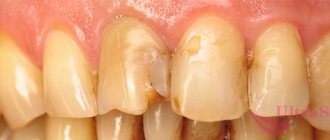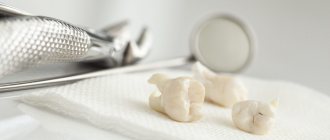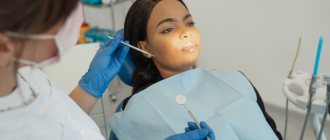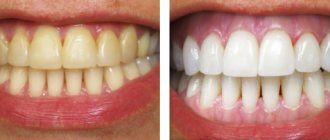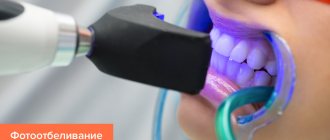A smile that is blindingly white is at the height of fashion in modern society and, moreover, it is a kind of indicator of a person’s success. Therefore, both professional and home methods of teeth whitening are equally in demand. At the same time, people usually begin to experiment with folk remedies, since many are simply afraid to go to the dentist, associating a visit to the doctor’s office with discomfort and pain.
In this article, we offer you a detailed overview of all existing teeth whitening methods - from professional technologies to folk recipes. The material will discuss the operating principle of different teeth whitening methods, effectiveness and safety. We will also talk in detail about the prices for professional whitening in modern dentistry in Moscow.
Teeth whitening: basic methods
Advertising of modern dental clinics offers patients different types of teeth whitening, including photo whitening, ultrasonic lightening of tooth enamel, mechanical, laser and intra-canal whitening. You can also find whitening pencils, mouth guards, and strips in pharmacies, the manufacturers of which assure that these products will restore your smile’s whiteness and attractive appearance.
How can a person who is far from medicine and has little understanding of what is really harmful and what is good for teeth not get confused in such an abundance of teeth whitening methods? The secret is simple - you just need to study the basics and operating principles of each method, and then make a choice in favor of a specific method.
What’s interesting is that all the methods listed above are classified into only two types – chemical and mechanical teeth whitening. Strictly speaking, mechanical methods cannot be called full-fledged enamel whitening - rather, they are high-quality cleaning of dental surfaces from all types of unwanted formations. However, it should be noted that proper oral hygiene gives a good brightening result - the enamel coating becomes noticeably whiter.
Mechanical bleaching is carried out using special equipment; it can use special pastes with hard and small particles (abrasive) that can destroy dense deposits. Mechanical methods of teeth whitening will help you achieve two goals at once: to achieve high-quality hygiene of the teeth and oral cavity and at the same time noticeably lighten the enamel.
Chemical teeth whitening - the procedure traditionally uses various substances that act on the tissue from the inside and destroy the pigments that stain the tooth enamel. Chemical methods are especially good when you need to get rid of deposits formed from frequent consumption of coffee, tea, other drinks that stain enamel, and from smoking.
Below we will consider in detail the operating principle of the most popular methods of chemical and mechanical teeth whitening, and we will analyze in detail their advantages, effectiveness, and disadvantages.
Calculate the cost of treatment by taking a short test in 20 seconds!
Do not delay your treatment, because in this matter time plays against us.
Price
Chemical whitening is quite expensive; this is due to the use of special devices and dental gels.
The cost of the procedure depends on the chosen method and clinic:
- whitening with laser from 10,000 to 15,000 rubles;
- Air Flow whitening - 4000-6000 rubles;
- home whitening with the Opalescence system (with the production of a custom tray) - up to 16,000 rubles;
- photo whitening - 4500 rub.
This price does not include pre-cleaning, treatment of caries and other dental problems. If there are direct contraindications, the doctor may refuse to perform the procedure until the problem is completely eliminated.
Chemical technologies for teeth whitening
All existing modern methods of chemical teeth whitening can be divided into two main groups - professional technologies and methods that will help achieve the desired result at home. In the first option, enamel whitening is an event that takes place in the dentist’s office, and it uses special gels containing a significant amount of hydrogen peroxide or substances based on it.
How much does the procedure cost?
The price of the service depends on the level of the clinic .
In
economy class dentistry, prices for chemical whitening start from five thousand rubles in Moscow (3,000 in the regions).
mid-price segment clinics you will have to leave an average of twelve thousand (8-10 thousand in the regions).
But for VIP service you will have to pay much more: from twenty-two thousand rubles for one procedure and more (from 15,000 in the regions).
In-office teeth whitening
To whiten teeth, the doctor treats the surface of the teeth with a gel substance, and then uses a special activator that catalyzes the chemical processes necessary to lighten the enamel coating. The following can be used as such an activator:
- Thermal impact.
- Action by ultraviolet radiation.
- Laser.
The use of activators helps reduce the time that aggressive substances remain on the patient’s dental surfaces and at the same time enhances the whitening effect. The main advantage of professional techniques is the achievement of a significant and noticeable positive effect in changing the color of the enamel: it brightens by 5-7 tones in just one visit to the dentist’s office.
However, it is worth knowing that chemical teeth whitening, while highly effective, also has a significant disadvantage - it negatively affects the condition of the enamel layer and, with frequent use, can cause the process of its thinning, which is fraught with the risk of developing caries. Therefore, after chemical teeth whitening, experts recommend undergoing additional remineralization and fluoridation procedures, which will help strengthen the enamel and maintain its integrity.
Dentist advice
Experts recommend:
- do not be afraid of possible pain. 99% of all people who have undergone this procedure did not feel pain;
- A prerequisite for ensuring a uniform whitening effect is preliminary professional dental cleaning. Otherwise, areas with plaque or tartar will be much darker than the rest of the surface;
- after a visit to the clinic, you should not smoke for 3 days, you should not drink strong tea and coffee for a week, or consume foods and drinks containing natural or artificial dyes;
- During the first two weeks, the mouth must be cleaned after each meal and at night. In this case, in addition to the usual brush and paste, you should use an irrigator (a device for cleaning teeth with a directed stream of water under pressure);
- At the first symptoms of dental problems, consult a doctor.
The network of dental clinics “Smile” offers teeth whitening services using the ZOOM-4 method. We have family and cumulative discounts. Our doctors are highly qualified and continue to improve their skills in leading Russian and European dental clinics. The level of medical services provided in our centers meets international standards.
Branches of our orthodontic center are located in Moscow within walking distance from the metro:
- Art. Alekseevskaya (VDNKh district, etc. Mira), address: st. 3rd Mytishchiskaya house 3, building 2;
- Art. Shelepikha, address: Shelepikhinskaya embankment, address: building 34, building 1.
We will make your smile snow-white! Come to us for beauty and health!
Home methods for teeth whitening using specialized chemistry
Home teeth whitening methods differ from professional methods in that they use formulations with a reduced concentration of a bleaching agent - usually its content in pastes and gels for home use does not exceed 10-15%, while in professional products it is much higher - up to 35%. .
This concentration was not chosen for home whitening products by chance: when using gels and pastes independently, a person cannot properly protect the mucous membranes of the mouth and gums from the negative effects of aggressive substances, which can lead to burns.
Also, the difference between professional and home methods will be in the following nuances:
1. When using home methods, a pronounced positive result will not come so quickly: usually, to noticeably lighten the enamel, you need to use gels, pastes and aligners for at least 14-15 days. Professional chemical whitening will give the desired result in just one visit to a specialist.
2. Professional whitening uses both activators that speed up the process and substances that protect the enamel, therefore, in comparison with home technologies, it is both more effective and safer.
Home whitening products can be used either independently or under the supervision of a dentist. The second option will be the optimal solution in terms of not only efficiency, but also safety, since specialists will make individual mouth guards for the procedure and carry out a competent selection of the whitening composition.
The mechanism of action of home whitening in this case is that special acidic substances from the composition initially make the enamel coating more porous and permeable, and hydrogen peroxide eliminates darkening and plaque. Wearing individual aligners while using the whitening gel will help avoid burning sensitive tissues. If we talk about the advantages of home whitening, we can note the fact that if it is damaged, the negative effect on the enamel is to a lesser extent, but it also takes longer.
Advantages and disadvantages
Chemical enamel lightening has been used for quite a long time. Despite this, many patients refuse the procedure, considering it very harmful.
But, if you follow all the necessary rules, you can avoid unwanted consequences.
Among the advantages of this procedure are:
- good result. With proper care, whiteness can be preserved from 2 to 5 years;
- no overheating of the enamel , as is the case with other techniques.
Among the disadvantages are:
- teeth after such a procedure become very sensitive;
- high price;
- under the influence of aggressive substances, severe irritation of the oral mucosa occurs;
- If teeth naturally have a grayish tint, then achieving their whiteness is very difficult.
Despite its shortcomings, the procedure remains in demand. It should be remembered that it is best to carry out chemical whitening in a good clinic, since this method requires a highly qualified dentist.
Free consultation on the cost of treatment in our dentistry
Leave a request and the clinic administrator will contact you within 15 minutes!
It is worth considering that any methods using chemicals have a number of limitations. You should not use whitening chemicals if there are units in your mouth with untreated caries, worn out and old fillings, old and hardened deposits, or inflammation of the soft tissues of the mouth. If there are such contraindications, it would be advisable to visit a specialist and, during a dentist appointment, carry out both high-quality sanitation of the oral cavity and the elimination of all problems that will interfere with the teeth whitening procedure.
Good to know: some modern teeth whitening pastes contain urea peroxide, and advertising assures that teeth will whiten simply by brushing them, since this component can not only erase dense plaque, but also lighten the pigments in the enamel coating itself. However, advertising and the manufacturer greatly exaggerate the effectiveness of such pastes.
They contain peroxide in low concentration, and therefore you should not count on a positive result in lightening the shade of enamel when using the paste. In addition, none of the lightening pastes contain acidic components, which make the enamel porous and thereby contribute to its rapid lightening. Therefore, we advise you not to waste your money and time and buy only those products for home procedures that your dentist recommends.
Whitening dental strips
Whitening strips are one of the most affordable products that can be purchased at any pharmacy. At their core, these are narrow strips of polyethylene, with a layer of brightening composition applied to the inside, in which the main active component will be hydrogen peroxide with a content of up to 10%. The strips are sold in sets, which contain separate stickers for the upper and lower dentition.
There is nothing complicated in using the product: just attach the strips to the outside of the teeth and leave for half an hour. During this time, the brightening substance will begin to act, triggering chemical reactions in the enamel coating that will gradually destroy the colored pigments. Strips are used for teeth whitening in a course, the average duration of which can be up to 14 days. It is advisable to use the stickers twice a day - in the morning and in the evening, so the positive effect will come much faster.
If you believe the reviews of the strips from people who have tried them from personal experience, then there is no particularly pronounced whitening effect from their use, but there is a high probability of encountering negative side effects, among which buyers of the product mention burns and inflammation of the gums, increased sensitivity of teeth to to various external stimuli.
Teeth Whitening Pencils
A whitening pencil is a small tube with an enamel-lightening component, which is distributed over the surfaces of the teeth with a brush or sponge. The hydrogen peroxide content in lightening pencils is quite low - no more than ten to fifteen percent, but this is enough to severely burn the soft and sensitive tissues of the mouth if used incorrectly. It is almost impossible to choose the right pencil based on peroxide concentration on your own, since each person has individual indicators of the density of the enamel layer and sensitivity. Therefore, it is also impossible to predict negative consequences after using a whitening pencil.
If you decide to try this particular product, we advise you to choose a product with a lower concentration of hydrogen peroxide and be careful when applying it.
Instructions for using teeth whitening pencils are quite simple:
- Before using the pencil, be sure to clean your teeth with regular toothpaste and then rinse your mouth thoroughly.
- Wipe dental surfaces dry with a sterile cloth.
- Treat the surface of the teeth with whitening gel.
- After the procedure, you should not close your mouth for 7-10 minutes (exact instructions should be read in the instructions for the specific product).
After the specified time has passed, the mouth and teeth must be cleaned of any remaining gel. Pencils, like strips, are recommended to be used in a course of two weeks. It is also worth knowing that the effectiveness of using pencils will greatly depend not only on the individual characteristics of a person’s tooth enamel, but also on the presence of a number of bad habits.
Laser teeth whitening technology
Laser teeth whitening is a relatively new way to achieve a snow-white smile, having only started practicing dentistry about 15 years ago. Laboratory tests show that the method is not only most effective, but also safe for patients.
Laser whitening is a chemical method of lightening the enamel coating, since it uses a special whitening composition that is used to treat tooth surfaces. The main component of the composition is the same hydrogen peroxide.
After applying the whitening agent, the surface of the teeth is exposed to a laser, which triggers and accelerates the chemical reactions necessary to lighten the enamel layer. Our dental clinic in Moscow, Vanstom, uses ZOOM and BEYOND whitening methods.
The whitening procedure includes the following steps:
1. Before applying the whitening composition, the specialist applies protective agents to the soft gum tissues that will protect them from burns and irritation. However, it is worth knowing that such treatment does not provide a 100% guarantee of protection; some redness of the gums after the laser whitening procedure is considered normal. Traditionally, this redness does not cause discomfort in patients and goes away quickly - in just one day.
2. Next, the dental surfaces are treated with whitening gel and exposed to laser radiation.
Apart from slight redness of the gums after the procedure, no other side effects are observed. The result that can be achieved with competent and high-quality laser whitening is lightening the enamel layer by several shades.
Before making a choice in favor of laser teeth whitening technology, it is worth finding out whether you have any contraindications to it. Lightening tooth enamel with a laser is contraindicated for children and adolescents under 18 years of age, pregnant and lactating women. The procedure is not performed if you are allergic to the components of the whitening gel, have chronic pathologies of the pancreas, or have diabetes.
Before the procedure, it is imperative to treat all teeth with carious lesions, sanitize the oral cavity, and replace old fillings with damage. If there are holes or cracks in the tooth, gel substances can penetrate through them into the dentin and cause severe pain during the laser whitening process. The procedure is not performed for periodontal inflammation, since the specialist cannot completely isolate the soft tissues of the patient’s oral cavity from contact with the gel, and bleeding gums will interfere with the correct implementation of manipulations and, moreover, will negatively affect the results of whitening.
Many patients are also interested in the question: is laser whitening safe and can it be used often? For healthy teeth with a strong and dense enamel coating, laser whitening will be absolutely harmless, but if the patient’s natural enamel is thinned, its natural color is slightly yellowish, beige, it is better to resort to another technique. Also, laser lightening is not the best option for people with increased sensitivity of teeth to external factors. The price of laser whitening at the VENSTOM clinic is 8,250 rubles (1 row of teeth).
You can get detailed advice on the service and prices by making an appointment with the specialists of our dental clinic in Moscow - Vanstom. Our clinic is located next to the Baumanskaya metro station.
Expected effect
The degree of lightening depends on the original color of the surface layer. Yellowish shades of teeth respond best to whitening.
The effect, as a rule, occurs after the first session, and with proper care lasts for 2-5 years.
You can lighten the enamel by several shades ; people with a natural yellow tint cannot achieve a snow-white smile.
For patients whose enamel has a grayish tint, chemical whitening will not have any effect.
Photo teeth whitening Zoom.
Photo-whitening of teeth is also a chemical method of lightening the enamel coating, however, it uses ultraviolet rather than laser as a reaction activator. Other names of technology are cold whitening, Zoom. The know-how is popular among patients, both because of its high efficiency and harmlessness to the healthy state of the body.
When photobleaching, the surfaces of the teeth are initially treated with a gel containing hydrogen peroxide. Interestingly, the gel is applied exclusively to units in the smile zone, that is, to ten upper and ten lower teeth. The concentration of the active substance is quite high - from 25 to 35%. After this, the outer part of the teeth is exposed to ultraviolet radiation, for which the dentist uses a special lamp - halogen, LED or ultraviolet. The use of ultraviolet light in the procedure allows:
1. Catalyze chemical reactions, due to which colored pigments in the deep layers of the enamel coating of teeth lighten much faster.
2. Reduce the time of manipulation in general. The gel is applied for a short time, which makes it possible to reduce the risk of its harmful effects on the enamel layer.
Positive results from cold whitening are noticeable after the first procedure, but if the darkening of the enamel was initially significant, several sessions may be required. On average, the photobleaching process lasts from 30 minutes to one hour, and after completing all manipulations to lighten the enamel, it is recommended to undergo an additional fluoridation procedure.
The result that is achievable when using the method in question is a change in the shade of the enamel by two or three tones, but the procedure will not make your teeth absolutely snow-white. To maintain the whiteness of the enamel coating, you should exclude coloring foods from your diet for a while. It is also necessary to carefully observe oral hygiene and all the recommendations that a specialist will give you upon completion of all manipulations.
Another significant nuance that you should know about when deciding to resort to cold teeth whitening is that in some cases the enamel may whiten unevenly or after the procedure, previously installed fillings will become noticeable. In such situations, additional procedures are usually performed, which affects the final price of cold whitening for the patient. Is the cold whitening method right for you? The specialists of our dentistry in Moscow, Vanstom, will help you find the answer to this question! To make an appointment with the clinic’s dentist, just call us!
In-canal teeth whitening technology
This technique is used exclusively for “dead”, pulpless teeth, the enamel of which may darken due to the action of substances released when the pulp dies and the penetration of coloring pigments into the deep layers of the natural enamel coating. Professionals call the procedure endobleaching. How it is carried out and what its effectiveness is – we will look into it in detail.
Indications
Like every dental procedure, this type of lightening has its own indications:
- Whitening is worth doing if you notice changes in the color of the enamel , which are associated with hypoplasia (non-carious damage to the teeth).
- The chemical type of procedure is well suited for those who have bad habits - smoking or drinking coloring alcoholic beverages (for example, red wine).
- Changes in the color of teeth that are caused by age-related changes in humans .
- "White spots" on teeth caused by discoloration .
- Yellowing of pulpless teeth.
It is worth noting! Chemical whitening will be most effective on smooth, pre-cleaned teeth.
Free consultation on the cost of treatment in our dentistry
Leave a request and the clinic administrator will contact you within 15 minutes!
The essence of the procedure is that the specialist introduces a special bleaching substance into the dental canal, which causes an oxidation reaction and subsequent discoloration of the colored tooth tissue. After intracanal bleaching, the tooth becomes whiter, but in general, the results of the procedure will depend on the content of active substances in the gel and the time it remains in the canals. To get an aesthetic color and a beautiful smile, during intra-canal whitening it is recommended to visit the doctor strictly according to the established schedule, since if you leave the gel in the tooth too long, the tooth will become too light and will noticeably stand out from the rest.
The intracanal whitening procedure can hardly be called simple. It includes a number of stages. The process begins with the removal of old filling material from the canals, and then the dentist thoroughly cleans them with a specialized instrument - ideally thin taper drills. Next, the canals are treated with disinfectants and only after that a bleaching agent will be introduced into them.
Intra-canal whitening has not only indications for use, but also contraindications, including: childhood, periods of pregnancy and lactation, caries, periodontal inflammation, increased abrasion of the natural enamel coating, noticeable cracks in it. If we talk about the effectiveness and durability of the effect, then on average the results of intra-canal whitening last for a period of 2 to 3 years. If desired, the procedure can be repeated, but you should not abuse its quantity: the more times the chemical reagent is introduced into the tooth tissue, the more fragile they will become.
Before resorting to intra-canal teeth whitening, you should definitely consider the risks of possible undesirable consequences. In particular, after the procedure, dentin becomes more vulnerable to mechanical damage and destruction, and although the enamel will become lighter, it will not acquire a pleasant natural shine. It is difficult to choose the right chemical whitening method on your own, because it is important to take into account a number of nuances. Therefore, do not make a choice yourself - get advice from experienced and competent dentists at the Vanstom clinic! Our clinic is located next to the Baumanskaya metro station, you can make an appointment at any time convenient for you! The price of intra-canal whitening of 1 tooth at VENSTOM dentistry is 2,200 rubles.
Oral preparation
Before the procedure, it is very important to carry out high-quality preparation of the oral cavity; it includes:
- treatment of caries or other dental problems;
- root canal filling;
- removal of deposits and plaque;
- cleaning with a special paste.
This stage is considered very important; its poor quality can affect the degree of lightening.
Mechanical teeth whitening techniques
When using mechanical methods, the enamel coating brightens due to high-quality cleaning of dental surfaces from hard and dense formations. The result will be especially noticeable with dark plaque from smoking, constant consumption of coffee and strong tea. Removing plaque and tartar in such cases radically transforms the appearance of your smile. For mechanical procedures, ultrasonic cleaning and Air-Flow technology can be used. We will discuss the features of each method in detail below.
Calculate the cost of treatment by taking a short test in 20 seconds!
Do not delay your treatment, because in this matter time plays against us.
Experts about harm
Today, chemical whitening gels are considered safe and, with proper care and procedure, do not cause side effects.
Most specialists do not consider the procedure dangerous to the health of the elements of the jaw rows, the main thing is that the number of sessions does not exceed acceptable standards.
In rare cases, increased tooth sensitivity and irritation of the oral mucosa may occur. To avoid such complications, it is better to choose a good clinic and a qualified dentist.
To maintain the effect for a long time, it is necessary to exclude from the diet foods that can cause darkening of the enamel (strong teas, coffee, etc.), and you should also stop smoking.
Ultrasonic teeth whitening
Ultrasonic whitening is practiced in dentistry quite often and the demand for the technology is explained by the fact that it not only effectively removes plaque, but also destroys tartar. Teeth whitening with ultrasound is considered gentle and harmless to the state of the natural enamel coating: ultrasound acts exclusively on deposits and does not damage the enamel layer or cause negative changes in it, which are inevitable with chemical methods.
However, despite the safety of the method, after ultrasonic whitening, unwanted side effects may appear, in particular, increased tooth sensitivity. Proper preparation for the procedure, as well as its competent implementation, will help to avoid such consequences. An experienced dentist who conscientiously performs his work will never carry out ultrasonic whitening for periodontal inflammation or untreated caries.
If the patient has these diseases, the dentist will definitely treat them before teeth whitening. Also, before using ultrasound, procedures to saturate the enamel and dentin with minerals and macroelements will not be superfluous. They will help protect the natural enamel coating, strengthen it, and also prevent tooth hypersensitivity to external irritants.
The use of ultrasound is an excellent opportunity to return teeth to their natural color, as well as to carry out high-quality oral hygiene. Ultrasound will remove tartar even in the most inaccessible areas, and in addition, it also removes “smoker’s” plaque, against which all other methods are practically powerless.
Deposits on dental surfaces are destroyed due to the action of ultrasonic waves created by special devices or scalers. Even hard old formations collapse and are easily separated from dental surfaces, while ultrasound does not have any harmful effect on natural enamel.
To make the procedure faster and more effective, it uses not only ultrasound, but also water. Water flows under pressure through the end of the device and protects tooth surfaces from overheating, and also improves the process of separating deposits from the enamel. It is important to know that overheating of teeth is an extremely negative process that can subsequently lead to inflammatory processes in the pulp, and inflammation of the pulp involves a complex treatment process, and sometimes depulpation of the tooth.
The ultrasonic whitening process is completed by polishing the dental surfaces. The procedure usually takes place without any discomfort for the patient, but if your teeth are hypersensitive or there is mild inflammation of the gum tissue, it would be advisable to use a mild anesthetic. Usually a gentle agent based on lidocaine is chosen.
Good to know: Ultrasonic teeth whitening is quite possible to do yourself - all you need to do is purchase a special ultrasonic brush and use it regularly. However, keep in mind that the in-office procedure is better, better and safer in terms of efficiency, since it uses professional equipment and is carried out by a specialist.
The ultrasonic waves that the brush emits are inferior in power to the radiation of professional devices, but at the same time they are quite capable of coping with plaque. It is worth knowing that not everyone can use such brushes. They cannot be used by pregnant and lactating women, people with installed cardiac devices, crowns, veneers, or braces. You will have to stop brushing your teeth with an original brush even if you have many fillings installed - waves can destroy them. The price of ultrasonic teeth cleaning at VENSTOM dentistry is 2,200 rubles (the entire jaw). Air-Flow Technology
When using Air Flow technology, the effect is achieved due to the active action of a powerful air-water flow on the outer sides of the teeth, which also contains an abrasive substance. Traditionally, ordinary baking soda is used as an abrasive in the procedure. There is no need to worry that soda will damage tooth enamel; its particles in the solution are too small.
The components are mixed into the solution almost before it is supplied to the dental units and at the very tip of the working unit. The unit itself is firmly fixed on a special dental unit and then the patient’s teeth are treated with a mixture of water, air and soda. The power of the flow is such that dental surfaces are cleaned in a matter of seconds.
The advantages of Air-Flow whitening technology include not only the speed of the cleaning process, but also its high quality. The jet supplied from the unit easily penetrates into the most difficult to reach areas - interdental spaces, removes deposits above the gums and even cleans teeth under orthodontic structures. The duration of Air Flow whitening is only 30-40 minutes and during this time you can lighten tooth enamel to its natural shade.
The only drawback of the technology is that it is ineffective against tartar. If solid deposits are present in the patient in significant quantities, it is recommended to use ultrasonic cleaning. It is also worth considering the fact that if Air Flow whitening is carried out in violation of the technology, hypersensitivity of the teeth may occur, which may be accompanied by painful and unpleasant sensations. For this reason, you should seek services from professional, modern dentistry with an impeccable reputation among patients.
The Air Flow technique has a number of contraindications, including respiratory diseases, pregnancy, untreated caries, and periodontitis. Indications for teeth whitening using this method include not only changes in the color of the enamel and the presence of tartar: the procedure is often prescribed before the placement of orthodontic and orthopedic structures, or surgical manipulations. After brushing with Air Flow, tooth enamel becomes perfectly smooth and even. The service of teeth cleaning using Air Flow technology is offered to our patients by our dentistry in Moscow - VENSTOM. Cost of the service: 2,640 rubles (entire oral cavity).
Other methods of mechanical teeth whitening
In addition to professional methods, there are also home mechanical lightening techniques that are incredibly popular in modern society. However, using them to whiten teeth may be unsafe and cause more harm than good.
Traditionally, for home mechanical teeth whitening, people use pastes that contain abrasive particles. The abrasive in the paste will indeed help clean teeth from plaque, but at the same time it will gradually destroy the enamel structure, which will lead to its thinning and the appearance of tooth hypersensitivity. Constant and incorrect use of pastes with abrasives is also fraught with the risk of developing cervical caries, since it is in this area of the tooth that the enamel coating is destroyed most quickly.

